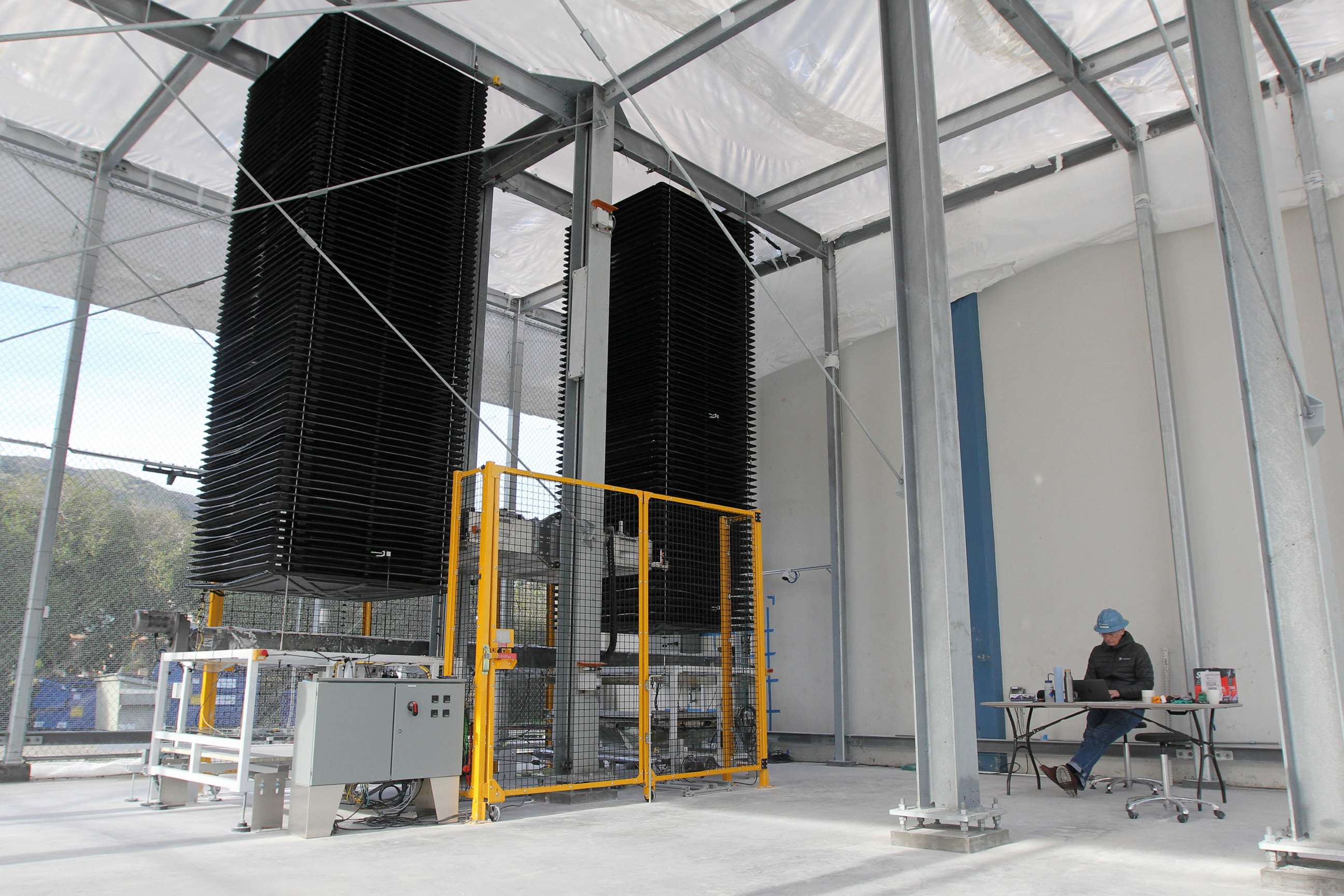These geoengineering technologies could help combat the climate crisis, scientists say
Methods include cloud seeding, solar geoengineering and carbon capture.
Climate scientists have been warning for decades of global warming's devastating consequences.
Now that the effects of climate change are being experienced around the globe -- droughts, rising sea levels and stronger storm systems -- scientists are exploring how geoengineering technology can help to alleviate the effects of rising temperatures.
Here are the different ways these techniques are being used to combat the climate crisis:
What to do when there isn't enough precipitation
Drought-stricken regions have been left scrambling to ensure water supplies after years of minimal rainfall and snowpack.
One of the techniques already being used in several places in the U.S. is weather modification, or cloud seeding, which involves injecting microscopic particles of silver iodide into the atmosphere to encourage rain and snowfall.
The particles then act like magnets for water droplets and bind together until they are heavy enough to fall as rain or snow.

The practice could boost snowpack by up to 15% in one year, according to a 2020 study authored by Sarah Tessendorf, a researcher at the National Center for Atmospheric Research in Boulder, Colorado. That extra precipitation could be the difference between being able to irrigate agriculture during the last three weeks of the dry season.
While the technique has been around for decades, interest has exploded in the past decade due to the decades-long megadrought plaguing the Western U.S., which houses important bodies of water, Garrett Cammans, president of North American Weather Consultants, one of the largest cloud seeding companies in the country, told ABC News.
There are currently 42 cloud seeding projects across the U.S. with another 200 stations opening up by next season.

The technology is helping to ease the effects of the drought in the American West, which has reduced water levels in the Colorado River, one of the most important river systems in the country.
"We’re now seeing flows of the Colorado River we’ve never seen before since records were kept," Brad Udall, senior water and climate research scientist at Colorado State University, told ABC News.
The Bureau of Reclamation has pledged $2.4 billion in funding for cloud seeding projects to slow the effects of drought on the Colorado River.
Alter how much sunlight the Earth absorbs
Solar geoengineering, which would involve pumping aerosols into the atmosphere to reflect sunlight, thus cooling Earth, has been a "controversial" topic in recent years, Paul Wennberg, a professor of atmospheric chemistry and environmental science and engineering at the California Institute of Technology, told ABC News.
The tiny particles are released about 10 miles into the stratosphere and create a "reflective blanket," the idea being to reflect about 1% of total incoming sunlight, Chris Field, director of the Stanford Woods Institute for the Environment, told ABC News.
"You could basically cool the Earth down because it's absorbing less sunlight," Wennberg said.
Scientists already know this is possible due to the eruptions of large, sulfur-rich volcanoes, Wennberg said. About a month after large amounts of sulfur gases are emitted from the volcano into Earth's upper atmosphere, the particles that form reflect away a small amount of sunlight, Wennberg said.
Earth's temperature temporarily dropped 1 degree Celsius in 1991 following the large eruption at Mount Pinatubo in the Philippines, according to the U.S. Geological Survey.

Solar geoengineering, however, is not considered a viable solution in the long term because the particles will eventually leave the atmosphere and temperatures will return to normal, Wennberg said.
Therefore, adding sulfur and other constituents to the stratosphere would need to be a continuous effort.
"Not only would you have to do it forever, you'd have to do more and more of it over time," Wennberg said. "And if you ever stopped, the Earth would rebound very, very quickly to the state that you would have without those particles."
In addition, the infrared blanket placed over the clouds prevents them from radiating energy upward, which could cause the clouds to break up and lead to strong warming, according to Cal Tech.
Other approaches to solar engineering include increasing the abundance of bright, reflective clouds in coastal areas, which could be more effective because they reflect more sunlight going over a smaller part of the Earth's surface, Field said.
Pluck the carbon straight out of the atmosphere
As greenhouse gases continue to be emitted into Earth's atmosphere, carbon sequestration, the process of capturing and storing atmospheric carbon dioxide, is being touted by experts as an effective way to lower temperatures.
The method is aimed "try to clean up the mess we've made," Wennberg said.
"It's effectively trying to do what the Earth will do in a millennium if we were to wait," Wennberg said. "But in this case, we're trying to speed it all up so that we can get back to lower atmospheric carbon levels."

One of the biggest challenges to implementing the technology is cost, Wennberg added.
Last year, the U.S. Energy Department pledged $2.6 billion in funding for the Carbon Capture Demonstration Projects Program, which aims to create storage technologies and infrastructure at major industrial sources of carbon dioxide, such as cement, pulp and paper, iron and steel and chemical production facilities.
These are not long-term solutions
While using engineering technologies to combat the climate crisis is a welcome solution, more needs to be done, experts say.
Conservation of natural resources on Earth, such as water and fossil fuels, is one way. The "real solution," Field says, is bringing greenhouse gas emissions to a net zero.
"The idea with these techniques would be to not necessarily deal with greenhouse gases but to change the energy balance," Field said.

Implementing these techniques could eventually lead to a "slippery slope" of more problems, Field said. Geoengineering does not combat the root of the problem, Wennberg said.
"If we use these techniques, the greenhouse gases are still in the atmosphere, the oceans are still becoming more acid," Field said. "And if we were ever stopped doing the solar geoengineering interventions, the temperatures would very rapidly warm."



